Recently World Cup’s Champion along with its well-developed niche in the beer industry, Germany is generally associated with biergartens, Oktoberfest and the pub grub that comes along with them — bratwurst, pretzels, schnitzel. But it doesn’t take a pinkie-poker to know that Germany also has a hand in the finer things of life — wine, for instance. 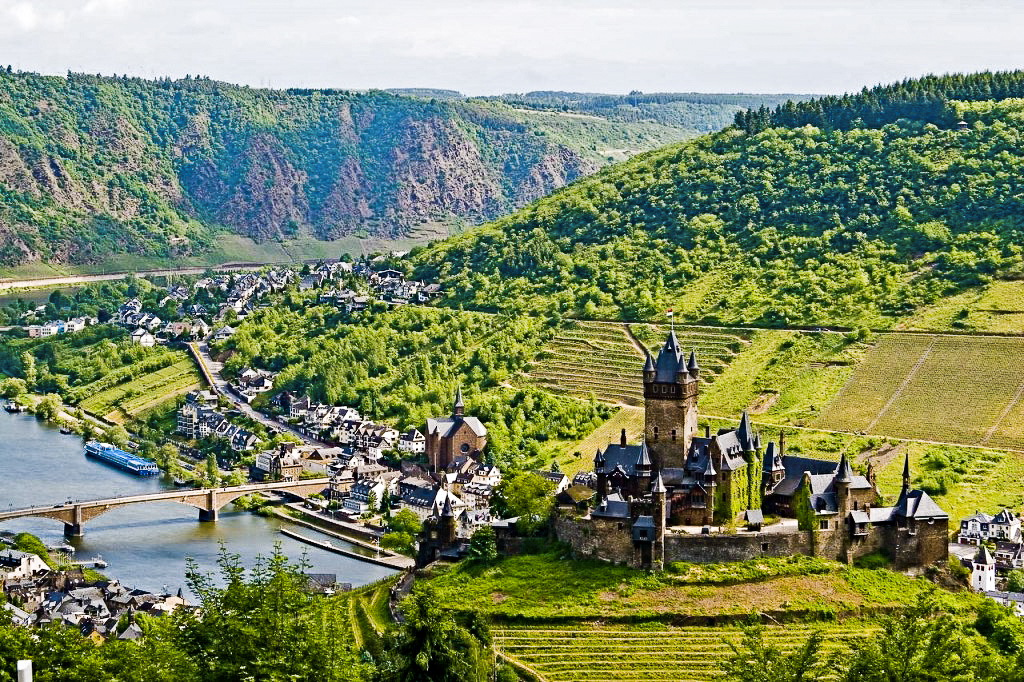 When it comes to wine, Germany is synonymous with Riesling, a white grape variety that first originated here in the Rhine region. Written references prove that the “Rießlingen” existed in the Rhine as early as 1435.
When it comes to wine, Germany is synonymous with Riesling, a white grape variety that first originated here in the Rhine region. Written references prove that the “Rießlingen” existed in the Rhine as early as 1435.
Mosel-Saar-Ruwer or The Mosel wine region is one of the most famous. It starts near the confluence of the Mosel and Rhine rivers near Zoblenz and carries on toward Luxemburg and the French border, with the Mosel slicing a path right through the middle. The hilly slopes of the river banks and the hard slate soil are ideal for vineyards, so much so that Mosel is the third-largest wine producer in all of Germany. 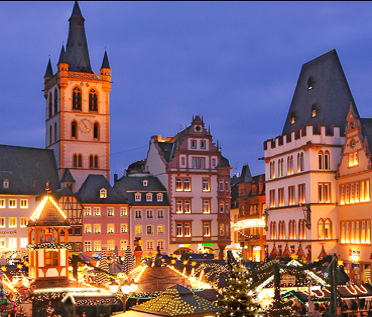 But for all their fervency for Mosel wines, the cultists were maddeningly vague about the actual place, and when we asked what it was like to travel to the region, the mystery only deepened.
But for all their fervency for Mosel wines, the cultists were maddeningly vague about the actual place, and when we asked what it was like to travel to the region, the mystery only deepened.
A must-see along the Mosel wine trail is the city of Trier. Founded in 15 B.C. by the Romans, the entire community marks a UNESCO World Heritage Site. Once home to the capital of the Western Roman Empire, it is now a quaint university city with astounding ruins to explore — the Porta Nigra, or city gate; three vast Roman bath houses; the throne hall of Roman Emperor Constantine; and a still-intact Roman amphitheater with underground tunnels and cages that were used for slaves and animals. Karl Marx was born and raised here, and you’ll find his baroque-style childhood home still standing as a museum to honor his work.
And here’s the must-visits on your journey in the Sleeping Beauty of the third reich
Fritz Haag
The Haag estate to those in the know is perhaps the one of the, if not the, most respected names in German fine wine. Quality is always the focus at this estate, and quantity is extremely limited. A sixth-century chronicle state that the vineyards of Brauneberg were “propter vinum” (because of wine) bequeathed to Verdun, France, then an important Roman commercial center. Napoleon paid tribute to the Brauneberger wines by fixing their prices above those of all other Mosel wines. When, in 1806, the Mosel vineyard sites were divided into classes according to the quality of their wines, Brauneberg was the only name in the first rank. 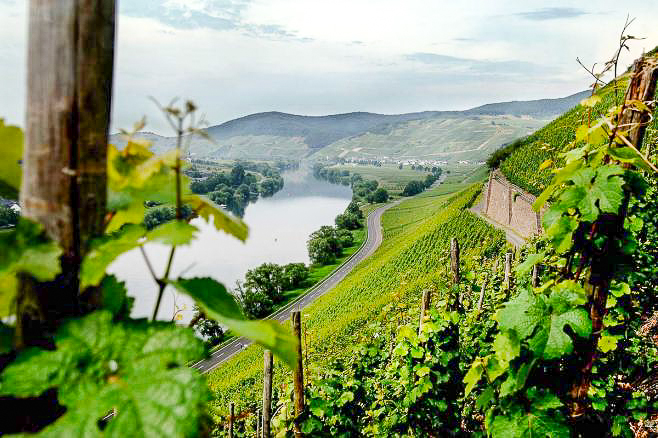
Dr. Loosen
Dr. Loosen winery overlooking the Mosel River just outside the beautiful town of Berkastel-Kues in southwest Germany. While Riesling is not considered by me (and my traveling companions) to be a favored grape, we were certainly surprised with the quality and enjoyment of the many Rieslings we tasted. During more the 200 years of family ownership, Dr. Loosen has compiled a scattered collection of plots in some of the best vineyards of the Mosel Valley. Dr. Loosen has plots in the Ürziger Würzgarten, Erdener Treppchen, and Wehlener Sonnenuhr vineyards, which are among the best of the region. When Ernst Loosen took over the estate in 1988, he sought to capitalize on the mature vines from these great vineyards by refining vineyard management and production techniques to improve the quality of the wine. 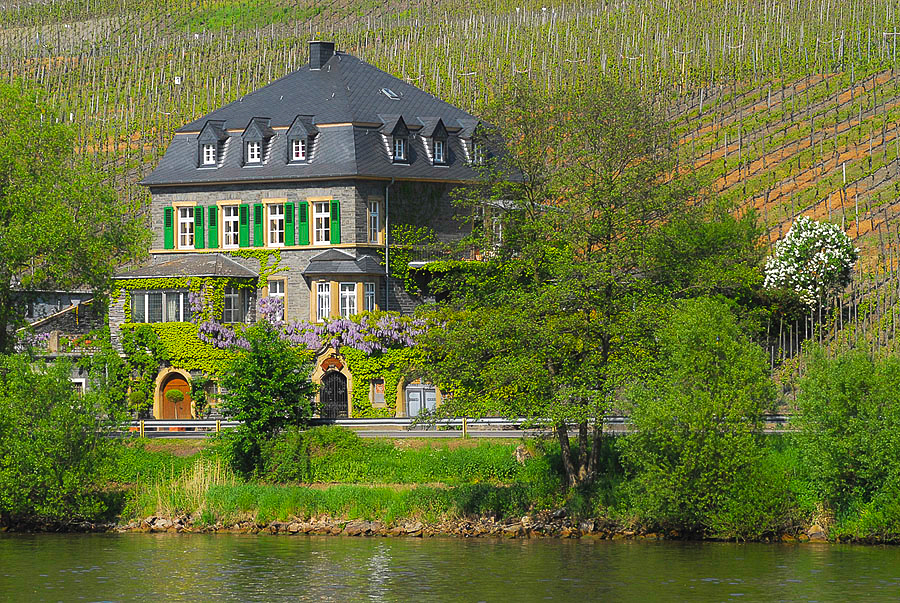
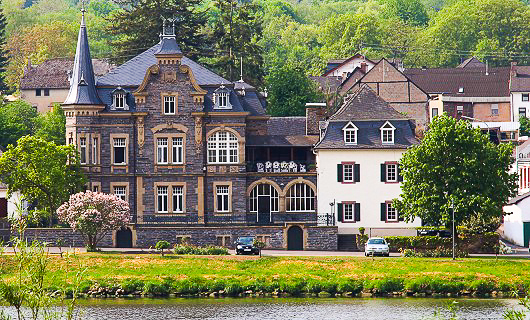 J.J. Prüm
J.J. Prüm
The winery, J.J. Prüm, is without doubt one of the best in Germany. The Prüm family themselves have been involved in making wine in the Mosel valley for two centuries. Nowadays, the owner is Dr Manfred Prüm, who works along with his daughter Katherina. His style of viticulture is without equal and shows a consistently high standard. His wines, classical Rieslings with superb elegance, are renowned for their great potential to age. The domain consists of 22 hectares, planted exclusively with Riesling. Of which, over half of these vines are planted in the top holdings of the Middle – Mosel: Wehlener Sonnenuhr and Graacher Himmelreich. 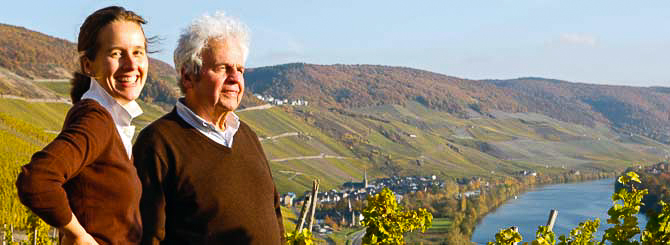
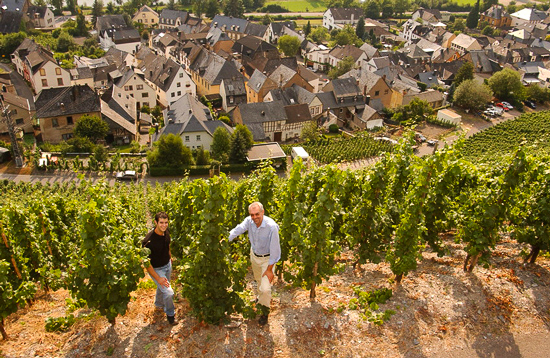 Willi Schaefer
Willi Schaefer
Willi Schaefer is a small estate located in the commune of Bernkasel-Graach, of the Middle-Mosel. Willi, and his son Christof, have holdings in the Graacher Domprobst and Himmelreich vineyards, as well as Wehlener Sonnenuhr. The wines are known to be highly enjoyable in their youth, as well as aging beautifully in the cellar. They are also known for disappearing quickly off retailer’s shelves, as this is a producer who’s been turning out stellar wines longer than most of us have been old enough to drink them. That’s not to say it’s impossible, especially in today’s world of the Internet. 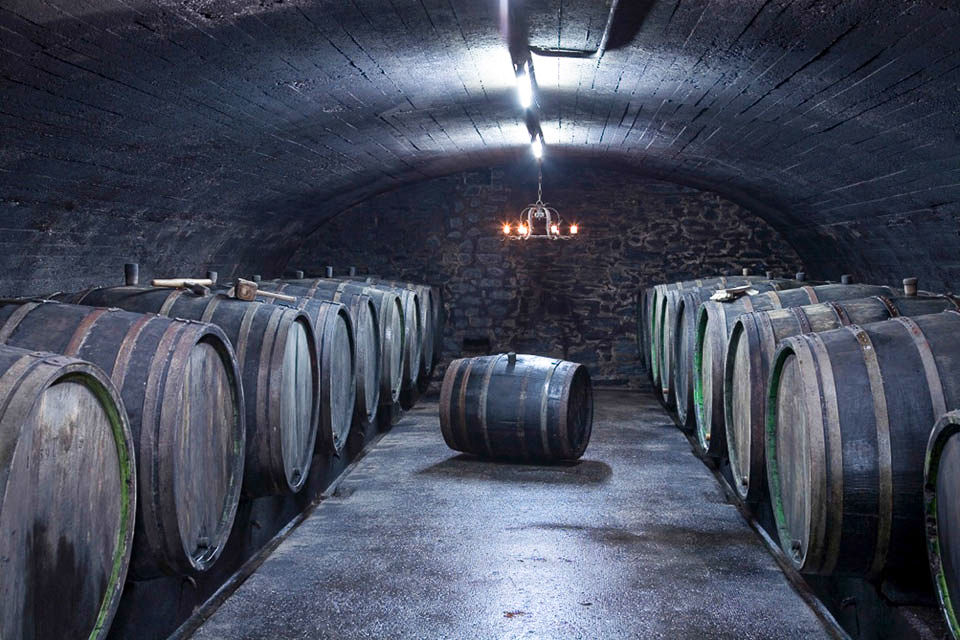 C. Von Schubert
C. Von Schubert
The Maximin Grünhaus estate lies at the foot of a long steep south-facing slope on the left bank of the Ruwer river, about two kilometres before it joins the Mosel. The estate belongs to the Von Schubert family and is divided into three separate but contiguous vineyards: the Abtsberg, the Herrenberg, and the Bruderberg. It is believed that the Grünhaus estate has produced wines since Roman times with discoveries including the remains of pottery for storing wine and Roman grape harvesters’ knives. Today, Dr. Carl von Schubert runs the winery, a fifth generation family member. When we see this historic label, we immediately think of our dad… he fell in love with wine after discovering German Rieslings in the late 1960s. He left his job in banking, packed up the family and bought a liquor store that he turned into a fine wine shop on the Jersey shore. He considered Maximin Grünhaus to be one of the greatest estates of Germany. 
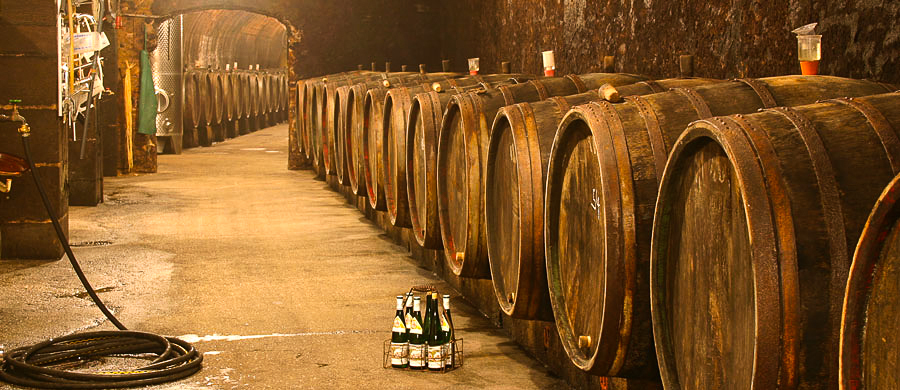
Sundown at the main market in Trier. As the light faded behind the roofs of the half-timbered houses that border the main market square, the produce vendors folded their tables, stacking crates of endives and carrots. But in a small tent at the square’s eastern edge, a strand of lights flickered to life: the Weinstand was open. A kiosk, really—no chairs, just an open-air wine-bar-in-the-round, and in its center, a young man and woman pouring wine. We ordered glasses and turned back around to watch the flower vendor amble across the cobblestones, her lilies quivering in their pails. She ducked down an alley between the ranks of row houses—this one pink stucco, the next yellow. And then, in an instant, she was gone. 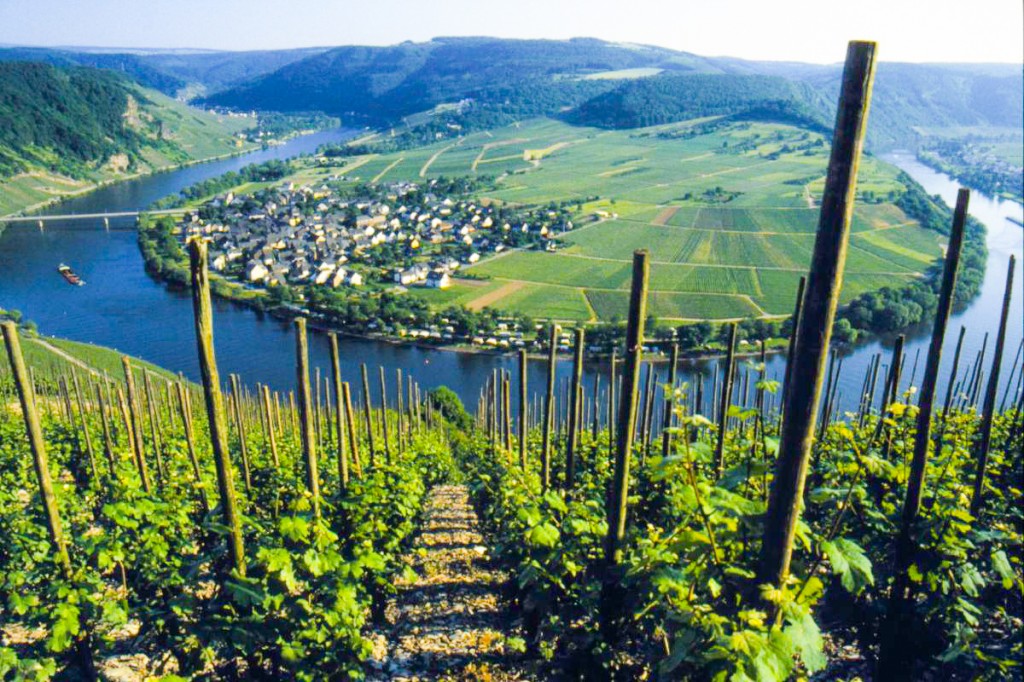 Fortunately, our wine arrived before the mood departed, and the first cool sips of the pale, straw-colored liquid—the elixir that had sparked our journey—delivered us back to our senses.
Fortunately, our wine arrived before the mood departed, and the first cool sips of the pale, straw-colored liquid—the elixir that had sparked our journey—delivered us back to our senses.
Riesling, anyone?



 0
0